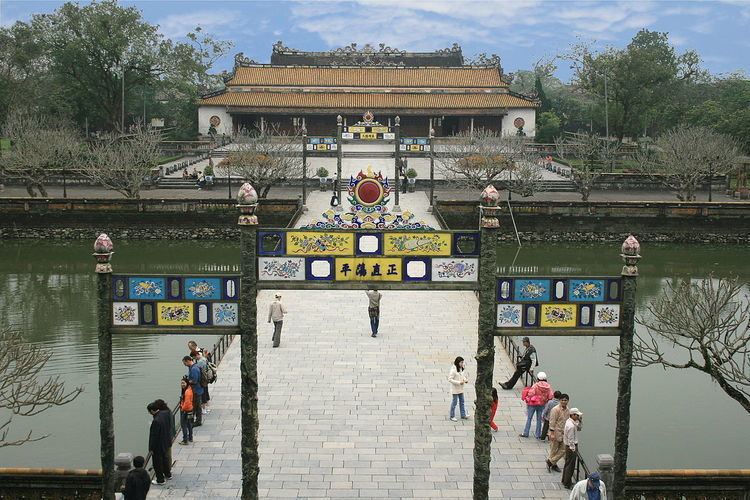 | ||
The Chinese domination of Vietnam (Vietnamese: Bắc thuộc, "Belonging to the North (China)") began in 111 BC, and is usually considered to have ended in 938 AD. A fourth, relatively brief, 20-year punitive invasion by the Ming dynasty, 400 years later, is usually excluded by historians in discussion of the main, almost continuous, period of Chinese colonization from 111 BC to 938 AD, as is the brief occupation of northern Vietnam by Chinese forces at the end of the Second World War.
Geographical extent and impact
The four periods of Chinese colonization or occupation do not correspond to the modern borders of Vietnam but to Vietnam as a cultural entity. During the first three Chinese periods of domination, Vietnamese society was primarily in the northern part of modern Vietnam. Ten centuries of Chinese colonization left a substantial demographic footprint, with settlement by large numbers of ethnic Chinese, while opening up Vietnam for trade. Against this the second period of Chinese colonization saw almost 500 years of revolt and war, though the third period (603-939) was more harmonious.
In addition to administration, and making Chinese the language of administration, the long period of Chinese domination introduced Chinese techniques of dike construction, rice cultivation, and animal husbandry. Chinese culture, having been established among the elite mandarin class, remained the dominant current among that elite for most of the next 1,000 years (939-1870s) until the loss of independence under French Indochina. This cultural affiliation to China remained true even when militarily defending Vietnam against attempted invasion, such as against the Mongol Kublai Khan. The only significant exceptions to this were the 7 years of the strongly anti-Chinese Hồ dynasty which banned the use of Chinese (among other actions triggering the 4th Chinese invasion), but then after the expulsion of the Ming the rise in vernacular chu nom literature. Although 1,000 years of Chinese rule left many traces, the collective memory of the period reinforced Vietnam's cultural and later political independence.
